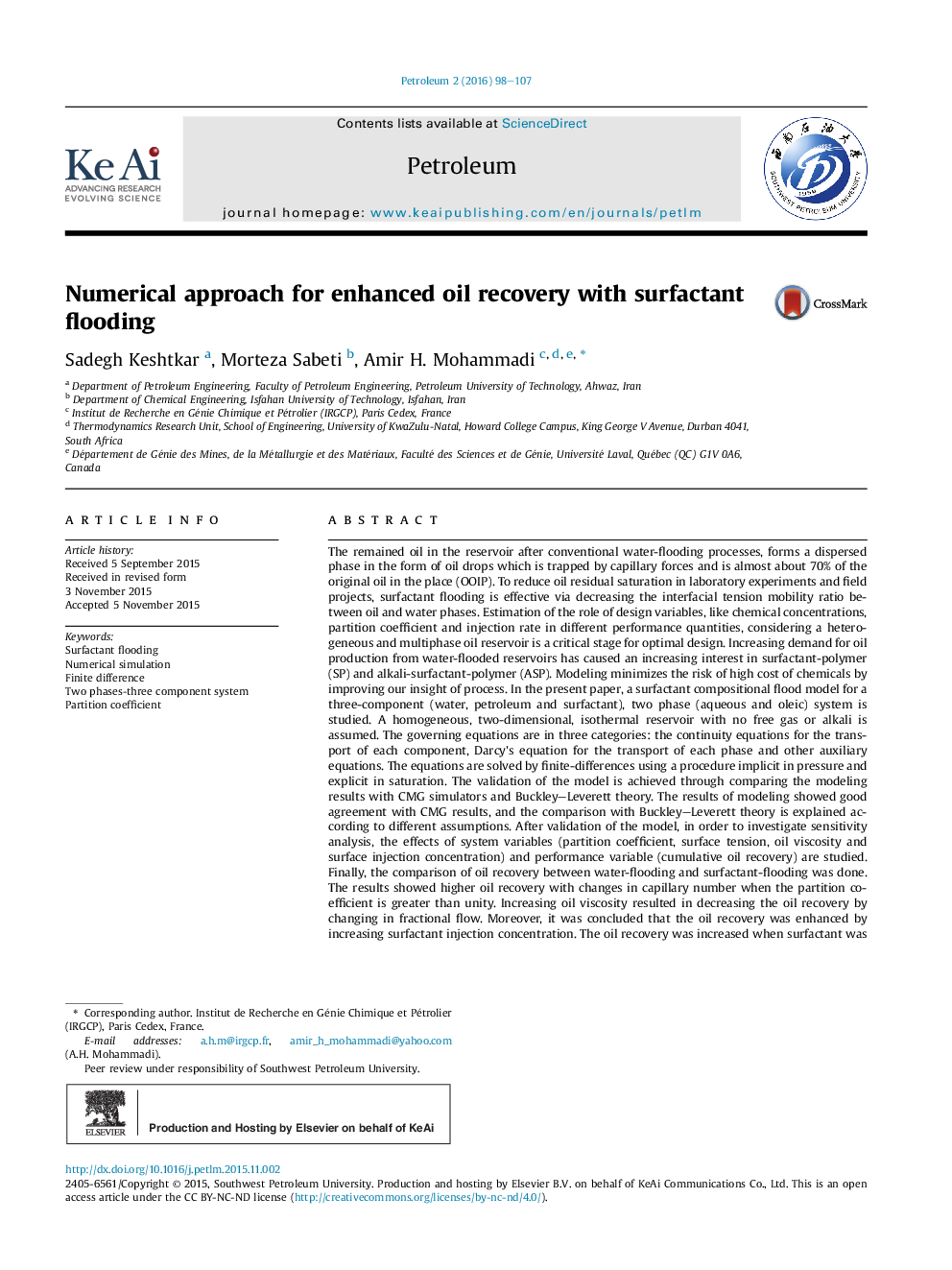| کد مقاله | کد نشریه | سال انتشار | مقاله انگلیسی | نسخه تمام متن |
|---|---|---|---|---|
| 852730 | 909413 | 2016 | 10 صفحه PDF | دانلود رایگان |
The remained oil in the reservoir after conventional water-flooding processes, forms a dispersed phase in the form of oil drops which is trapped by capillary forces and is almost about 70% of the original oil in the place (OOIP). To reduce oil residual saturation in laboratory experiments and field projects, surfactant flooding is effective via decreasing the interfacial tension mobility ratio between oil and water phases. Estimation of the role of design variables, like chemical concentrations, partition coefficient and injection rate in different performance quantities, considering a heterogeneous and multiphase oil reservoir is a critical stage for optimal design. Increasing demand for oil production from water-flooded reservoirs has caused an increasing interest in surfactant-polymer (SP) and alkali-surfactant-polymer (ASP). Modeling minimizes the risk of high cost of chemicals by improving our insight of process. In the present paper, a surfactant compositional flood model for a three-component (water, petroleum and surfactant), two phase (aqueous and oleic) system is studied. A homogeneous, two-dimensional, isothermal reservoir with no free gas or alkali is assumed. The governing equations are in three categories: the continuity equations for the transport of each component, Darcy's equation for the transport of each phase and other auxiliary equations. The equations are solved by finite-differences using a procedure implicit in pressure and explicit in saturation. The validation of the model is achieved through comparing the modeling results with CMG simulators and Buckley–Leverett theory. The results of modeling showed good agreement with CMG results, and the comparison with Buckley–Leverett theory is explained according to different assumptions. After validation of the model, in order to investigate sensitivity analysis, the effects of system variables (partition coefficient, surface tension, oil viscosity and surface injection concentration) and performance variable (cumulative oil recovery) are studied. Finally, the comparison of oil recovery between water-flooding and surfactant-flooding was done. The results showed higher oil recovery with changes in capillary number when the partition coefficient is greater than unity. Increasing oil viscosity resulted in decreasing the oil recovery by changing in fractional flow. Moreover, it was concluded that the oil recovery was enhanced by increasing surfactant injection concentration. The oil recovery was increased when surfactant was injected to the system and this result was obtained by comparing water-flooding and surfactant-flooding.
Journal: Petroleum - Volume 2, Issue 1, March 2016, Pages 98–107
